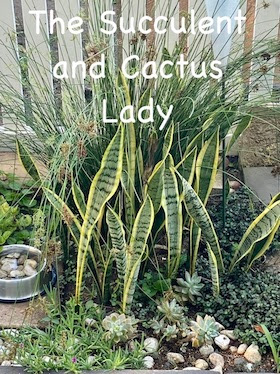Cacti are native to the United States and usually, when one thinks of cacti, one thinks of hot deserts and high temperatures.
But many smaller cacti live in the shade of rocks and other bigger plants and receive very little direct sunlight until they are big enough to fend for themselves. So be careful not to place your potted cacti in a full day's sun or on heat-reflecting patios, this can put a lot of stress on your plants.
All cacti need a well-draining soil. It is always better to water well and thoroughly, letting water pour out of the drain in the pot. Never let cacti sit in standing water. Let them go thoroughly dry between waterings and water sparingly during winter months as cacti do very little growing when cold.
Echinocereus rayonesensis - Hedgehog Cactus. Thick, upright stems forming a mound.
Typically, these are the Echinocereus, which have stems from two inches to 24 inches tall that grow from a single base. The first part of the genus name Echinocereus comes from the Greek word for 'hedgehog', while the second part 'cereus' comes from the Latin for 'large candle'.
Echinocereus is a genus that is much loved by cactus growers world-wide. There are several characteristics that collectively account for their popularity. All Echinocereus are small plants that are quite suitable for growing in pots and greenhouses. The stems of this genus are more often than not under a foot in height and perhaps 2 or 3 inches in diameter. Some are slightly bigger, some smaller.
Echinocereus rayonesensis
A small pot containing Echinocereus rayonesensis, two Haworthias and some Sedum (on the left)
Echinocereus scopulorum
Echinocereus Scopulorum has single, cylindrical stems, 10 to 40 cm long, nearly hidden by the closely set spines that are devoid of wool. The species occurs in a small region of a south-eastern portion of the state of Arizona and in the Chihuahuan Desert, USA, mostly on foothills and rocky slopes.
They are unbranched (rarely branched), the stems are erect, short cylindric, with 13-19 ribs. It carries 5-8 × 7-10 cm flowers; the blooming time is Spring to summer Fruits: Dark green, brownish tinged, 15-23 mm, pulp white, fruiting 2 months after flowering.
Echinopsis cactus with new pups
Echinopsis is a large genus of cacti native to South America, also known as hedgehog cactus or sea-urchin cactus. Echinopsis consists of over 100 species and plants range from very small, flattened-globose plants to quite large, treelike giants. As a result, there is a long list of synonymous names for many of the species. Some synonyms referring to other synonyms that refer to a subspecies of some seemingly distinct species. Sorting through these names often makes one feel like you're on a wild goose chase!The main attraction for Echinopsis collectors is their very large, showy flowers. These flowers are all funnel–shaped, with hairy/wooly scaled floral tubes which are normally much larger than the mother plant.
After years and years of being 'single', my Old Man Cactus (Cephalocereus senilis) has developed a friendship and branched out a second cactus. Native to Guanajuato and Hidalgo in eastern Mexico, it is threatened in the wild, but widespread propagation and popularity in cultivation have reduced the demand on wild populations.
The old man cactus takes its name from the long, white hair-like strands which grow out of the spiked column that makes up the plant. Like most cacti, the old man cactus is easy to care for. Give an old man cactus as much light as you can provide and allow it to have a dormant period in the winter. Old Man was getting a bit top-heavy in this narrow pot, so I have just recently transplanted him (them) into a larger pot and I am keeping a close eye on them.
This is Opuntia subulata cactus, a member of the most geographically widely-spread genus of Opuntia. Some folks call it Austrocylindropuntia, but you'll find all cacti have at least two if not six names! I haven't had one of these in the garden for years an this was given to me by a dear friend recently so I'm looking forward to seeing it grow. These get rather large, the true species is tree-sized and has four inch spines. But be careful where you plant this cactus - it spreads like wild fire by dropping branches and sending up shoots next to the mother plant and here in South Africa it has actually been put on the list of unwanted aliens.
One of my Rattail cacti (Aporocactus-flagelliformis) has spent the whole summer outside in the garden in stead of on the patio and has been gracefully reaching for the sun before getting too heavy and hanging down. Soon it will be time to take them inside and then, in spring, look forward to the myriad of gorgeous flowers.
::









.jpg)




